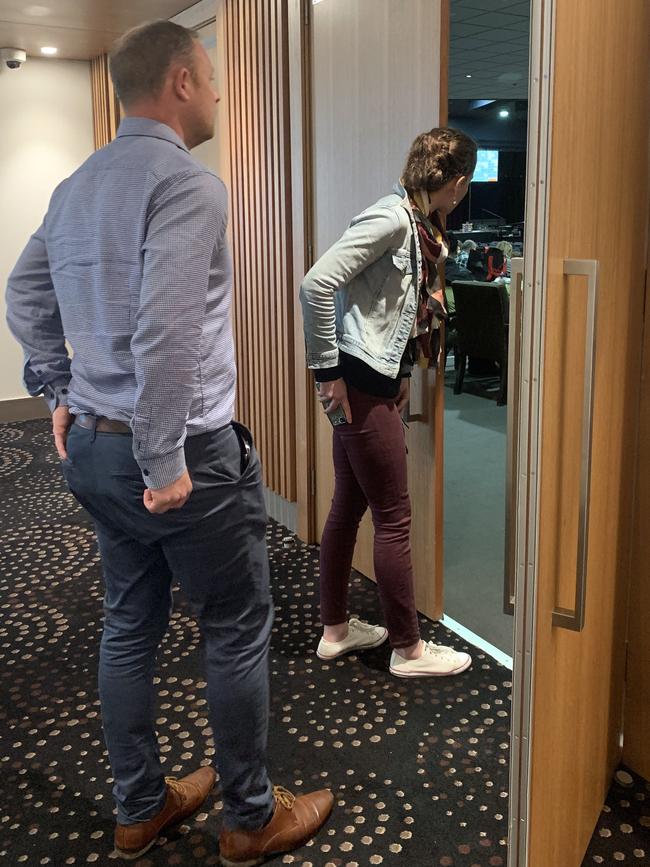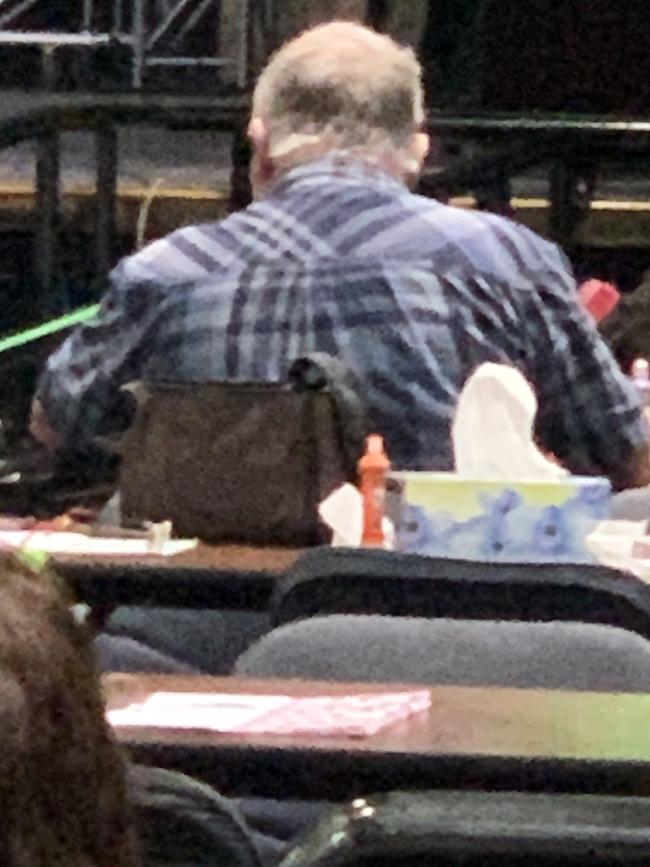Spot checks on ‘high risk’ offenders living in the community
They are among the state’s worst offenders who are now free but subject to Extended Supervision Orders. The Sunday Telegraph was given unheralded access to the team tasked with keeping tabs on them in our suburbs. INTERACTIVE: WHO THEY ARE
True Crime
Don't miss out on the headlines from True Crime. Followed categories will be added to My News.
More than 50 convicted killers, child sex offenders, terrorists, and dangerous criminals are living anonymously in ordinary homes across suburban Sydney.
The offenders are among 101 former prisoners released back into the community after serving their time but considered so high risk they are subject to Extended Supervision Orders.
Under the conditions of ESos they are subject to around-the-clock surveillance, surprise home visits and random drug checks.
However, neighbours living nearby the offenders remain completely unaware of the monsters in their midst.
Almost half those on ESos have returned to prison for breaching their conditions, but 51 remained in the community as of Friday.
The Sunday Telegraph was this week given exclusive access to ESO officers as they conducted several spot inspections on offenders in Sydney’s greater west.

It is 10am and one of Sydney’s most notorious child rapists is about to get a surprise knock at the door.
The offender, one of 101 “high risk” paedophiles, terrorists, killers, and dangerous criminals being closely watched by authorities after being released from prison into the community, recently moved into the sparsely furnished fibro house that sits among a row of neat family homes in an established neighbourhood.
An electronic monitoring device provides real-time information about his whereabouts, with ESO officers Bill Hopley and Dani Ottaway making a surprise visit each week.
On this visit Mr Hopley grills the man about how he would respond if he encounters children over the school holidays.
“If you were out, would there be any places that would put you at risk?” he asks.
The rapist says he mainly goes to the pub for “lunch, coffee” and to “play snooker”.
“I won’t go to a place where the kids are going to be there,” he says. “I’d rather stay at home because I’m safe, I’m not there doing anything wrong. It’s keeping me safe and it keeps the community safe.”
The officers scan the home for “cut-out pictures”, catalogues or anything that would suggest he was back to old habits.
MORE FROM LINDA SILMALIS
Inside Sydney’s maximum security female jail
Brekkie rage: 14-year-old inmate stabs prison guard
Like all the offenders placed on Extended Supervision Orders by the courts, the paedophile has served his sentence but has been declared too high risk to be freed.
Put up in ordinary family homes across Sydney, the offenders remain anonymous, with the local residents kept in the dark about their unseemly neighbours.
According to the Corrective Services NSW team charged with supervising prisoners on ESOs, the community should be reassured that each of the offenders are subject to daily covert surveillance together with surprise house visits.


Of the 101 high risk offenders, 50 have already been returned to prison for breaching conditions that include requirements such as emailing a diary for proposed activities for the week ahead to calling a psychiatrist before watching porn.
Ahmed Elomar, who was jailed after punching a police officer during the 2012 Hyde Park riots, and Ricky White, who was convicted of making threats to the Jewish Museum in Sydney, are two of four “high risk terrorism offenders” on supervision orders.
On Friday, Elomar was remanded in custody after allegedly breaching conditions of the ESO.
The next child sex offender we visit advised the team a week earlier that he would be playing bingo at the local RSL today.
After the officers cannot locate him, they contact the Silverwater unit tracking the electronic monitoring device he wears to determine his location. They confirm he is in the club.
He is later seen stamping numbers on a bingo card among a crowd of pensioners. He does not know he is being watched.
The officers also scan the room for a woman whom the man had confessed to being in a relationship with before the team requested it end.
“We had to tell him to break up the relationship because we found out after running her name through the system that she had been convicted of child torture,” Ms Ottaway says. “We just now need to make sure she isn’t here.”
The officers ask police later in the day to check the club’s CCTV to ensure she was not present.


The final visit is to the home of an older mentally ill man who spent almost two decades in prison after a killing spree in his youth.
The officers conduct a snap drug test before inquiring about his health as they await the result.
“I had two cortisone injections in my knee,” he says.
“They say I have osteoarthritis.”
The drug test comes back negative.
While many prisoners are freed after their sentences expire, Attorney-General Mark Speakman said the government had succeeded in almost nine out of 10 applications to keep the most serious of offenders behind bars or on a supervision order after their release.
“This represents a success rate of 89.5 per cent,” he said.

Counter Terrorism and Corrections Minister Anthony Roberts said the offenders were being visited daily by police, lawyers and psychiatrists, with intelligence gathered to allow for “an immediate response”.
“The ESO team keeps a close eye on these people, providing monitoring and supervision 24 hours a day, seven days a week,” he said.
Corrections NSW ESO Team Acting Director Heather Jackson, who is in charge of monitoring the offenders, said they were among more than 19,000 parolees and offenders on home detention in the community.
“My worst nightmare is someone in the community getting hurt, but we are monitoring them 24 hours a day and if they breach their conditions they go back in,” she said. “Two went back into custody yesterday.
“People say ‘not in my street’, but the more we shun them, the more likely they go back to their secretive ways and reoffend.”
Originally published as Spot checks on ‘high risk’ offenders living in the community


